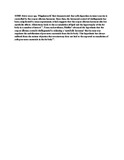| dc.contributor.author | Odhiambo, Thomas R | |
| dc.date.accessioned | 2015-07-27T12:29:37Z | |
| dc.date.available | 2015-07-27T12:29:37Z | |
| dc.date.issued | 1965-09 | |
| dc.identifier.citation | Nature 207, 1314 - 1315 (18 September 1965); doi:10.1038/2071314b0 | en_US |
| dc.identifier.uri | http://www.nature.com/nature/journal/v207/n5003/abs/2071314b0.html | |
| dc.identifier.uri | http://hdl.handle.net/11295/88930 | |
| dc.description.abstract | SOME thirty years ago, Wigglesworth1 first demonstrated that yolk deposition in insect oocytes is controlled by the corpus allatum hormone. Since then, the hormonal control of vitellogenesis has been complicated by some experiments, which suggests that the corpus allatum hormone also has metabolic effects. Allatectomy leads to the accumulation of lipid and the hypertrophy of the fat body in a number of insects2–6. From such evidence, Pfeiffer2 advanced the hypothesis that the corpus allatum controls vitellogenesis by releasing a ‘metabolic hormone’ that in some way regulates the mobilization of precursor materials from the fat body. This hypothesis has always suffered from the serious objection that ovariectomy does not lead to the expected accumulation of yolk precursor materials in the fat body2,6. | en_US |
| dc.language.iso | en | en_US |
| dc.publisher | University of Nairobi | en_US |
| dc.title | Metabolic effects of the corpus allatum hormone in the desert locust, schistocerca gregaria | en_US |
| dc.type | Article | en_US |
| dc.type.material | en | en_US |

